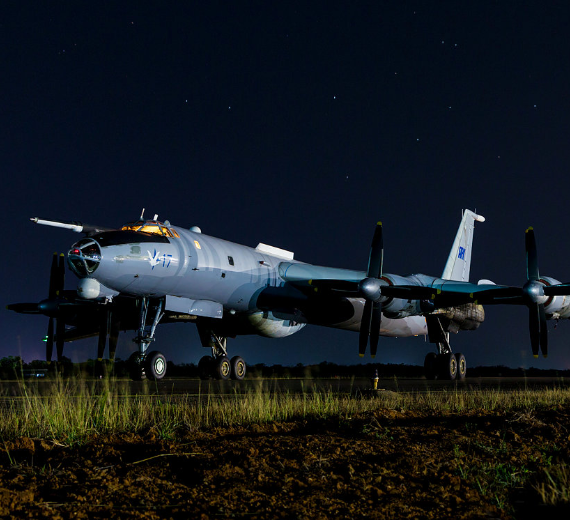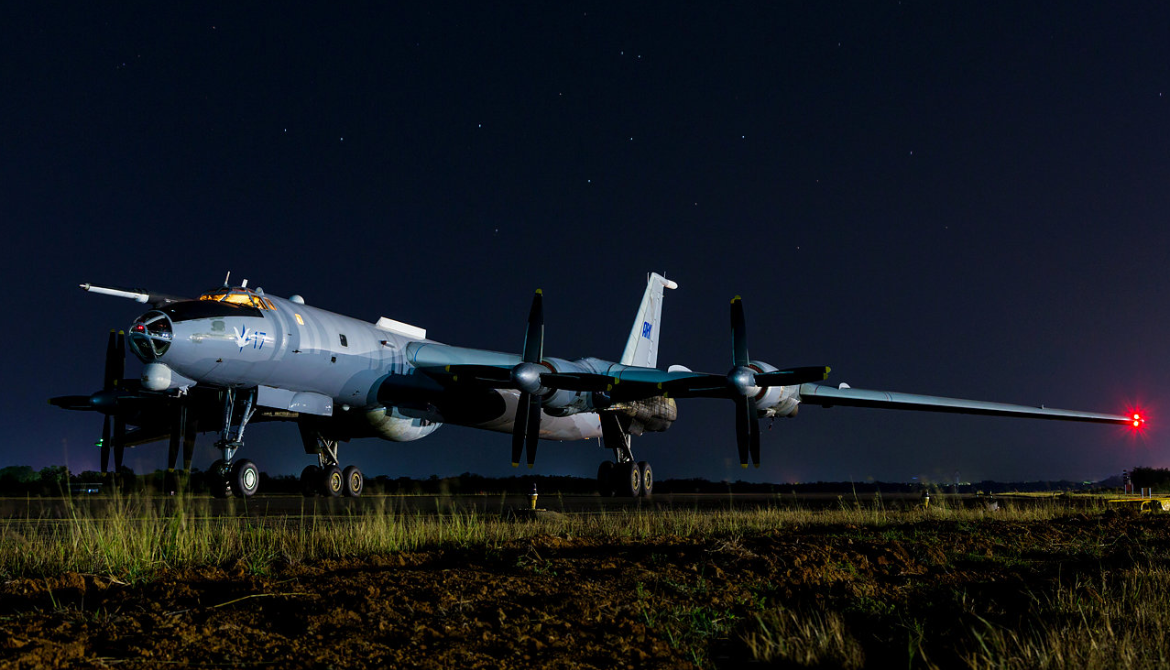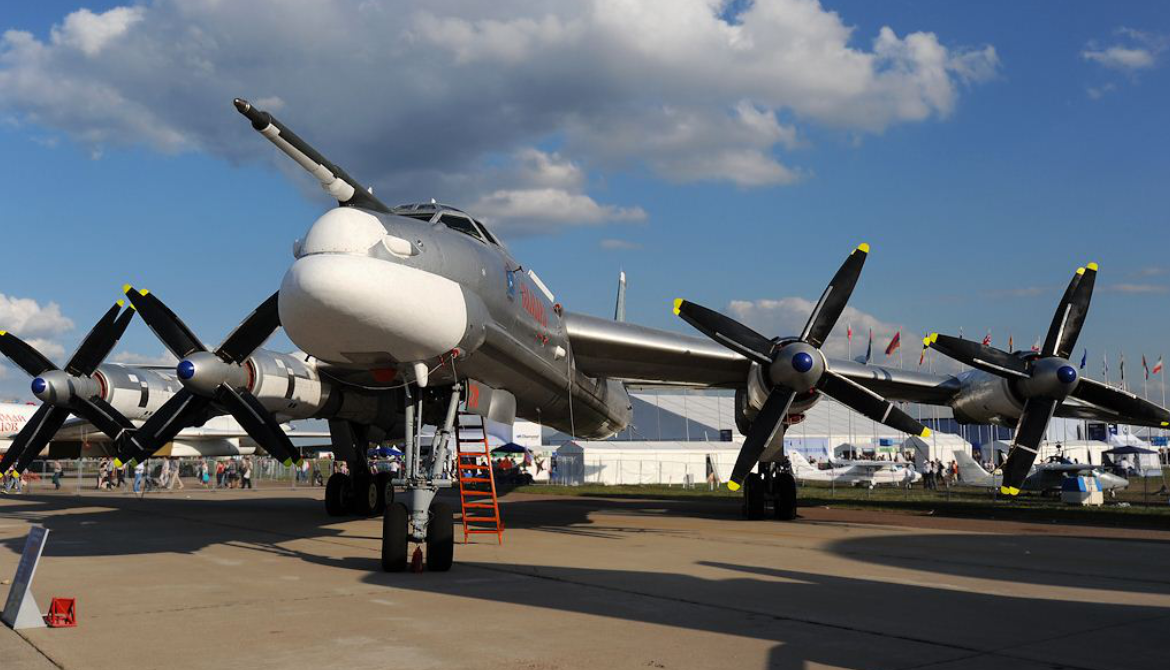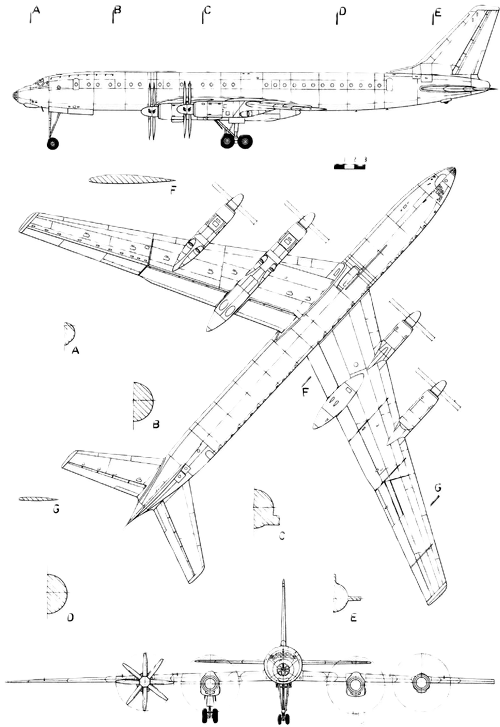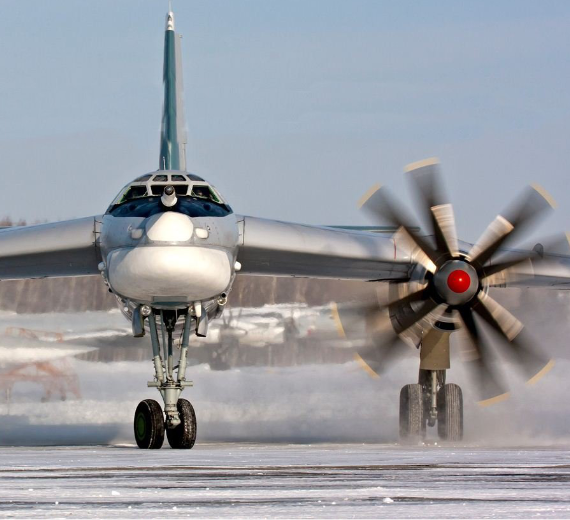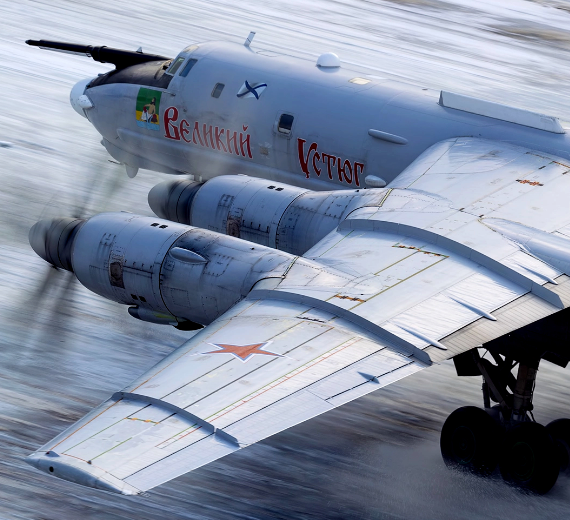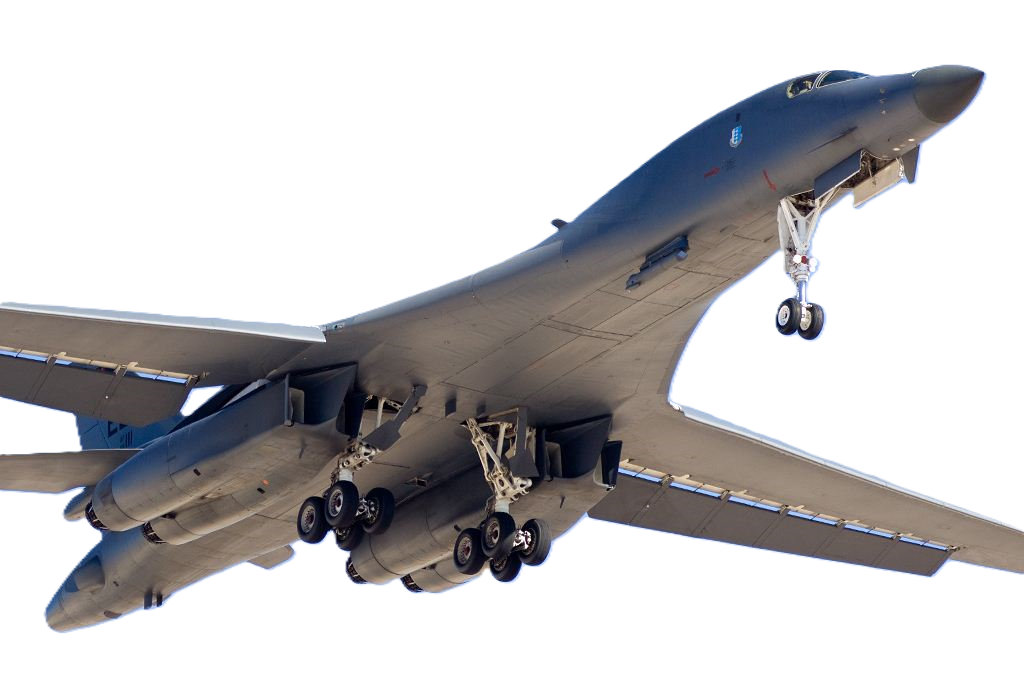Tupolev Design Bureau
Tupolev Tu-95 Bear
 |
|
| A Tu-95 flying over Moscow in 2014 | |
| Role | Strategic heavy bomber |
|---|---|
| National origin | Soviet Union |
| Manufacturer | Aviakor |
| Design group | Tupolev |
| First flight | 12 November 1952; 71 years ago |
| Introduction | 1956 |
| Status | In service |
| Primary users | Russian Aerospace Forces Soviet Air Forces (historical) Soviet Navy (historical) Ukrainian Air Force (historical) |
| Produced | 1952–1993 |
| Number built | >500 |
| Variants | Tupolev Tu-114 Tupolev Tu-142 Tupolev Tu-95LAL Tupolev Tu-116 |
|
|
.
History Public Joint Stock Company Tupolev,
Tupolev Tu-95 MSM Bear

The Tupolev Tu-95 (Russian: Туполев Ту-95; NATO reporting name: "Bear") is a large, four-engine turboprop-powered strategic bomber and missile platform. First flown in 1952, the Tu-95 entered service with the Long-Range Aviation of the Soviet Air Forces in 1956 and was first used in combat in 2015. It is expected to serve the Russian Aerospace Forces until at least 2040.
A development of the bomber for maritime patrol is designated the Tu-142, while a passenger airliner derivative was called the Tu-114.
Design and Development


The design bureau, led by Andrei Tupolev, designed the Soviet Union's first intercontinental bomber, the 1949 Tu-85, a scaled-up version of the Tu-4, a Boeing B-29 Superfortress copy. A new requirement was issued to both Tupolev and Myasishchev design bureaus in 1950: the proposed bomber had to have an un-refueled range of 8,000 km (5,000 mi), far enough to threaten key targets in the United States. Other goals included the ability to carry an 11,000 kg (24,000 lb) load over the target.
Tupolev was faced with selecting a suitable type of powerplant: the Tu-4 showed that piston engines were not powerful enough for such a large aircraft, and the AM-3 jet engines for the proposed T-4 intercontinental jet bomber used too much fuel to give the required range. Turboprop engines were more powerful than piston engines and gave better range than the turbojets available at the time, and gave a top speed between the two. Turboprops were also initially selected for the Boeing B-52 Stratofortress to meet its long range requirement, and for the British long-range transport aircraft, the Saunders-Roe Princess, the Bristol Brabazon Mk 2 and the Bristol Britannia.
0
KmCeiling
0
MiCombat RANGE
0
Km/hAircraft Speed
0
Max Crew
Photo Gallery
Public Joint Stock Company Tupolev,
Tupolev Tu-95 Bear


Public Joint Stock Company Tupolev,
Tupolev Tu-95 Bear
General Info
-
-
-
-
- Crew: 6–7; pilot, co-pilot, flight engineer, communications system operator, navigator, tail gunner, plus additional navigator, depending on mission profile.
- Length: 46.2 m (151 ft 7 in)
- Wingspan: 50.1 m (164 ft 4 in)
- Height: 12.12 m (39 ft 9 in)
- Wing area: 310 m2 (3,300 sq ft)
[
-
-
-
Powerplant
-
-
-
- Empty weight: 90,000 kg
- Gross weight: 171,000 kg
- Max weight: 188,000 kg
- Powerplant: 4 × Kuznetsov NK-12 turboprop engines 15,000 PS (15,000 hp; 11,000 kW)
-
-
-
Performance
-
- Maximum speed: 925 km/h
- Cruise speed: 710 km/h
- Range: 15,000 km (9,300 mi,
- Service ceiling: 13,716 m (45,000 ft)
Related development
-
- Guns: 2 × 23 mm (0.906 in) Gryazev-Shipunov GSh-23 autocannon in tail turret
- Missiles: Up to 15,000 kg (33,000 lb), including the Kh-20, Kh-22, and Kh-55/101/102,
.
Links to Youtube & Others
Ukrainian Air Force – inherited 23–29 Tu-95MS aircraft after the collapse of the Soviet Union, and subsequently handed 3 Tu-95MS and 581 Kh-55 cruise missiles to Russia as exchange for gas debt relief in 2000; the remainder were scrapped under the Nunn–Lugar Cooperative Threat Reduction agreement led by the US.
Tupolev Design Bureau Tupolev Tu-95 Bear
The Tu-95RT variant in particular was a veritable icon of the Cold War as it performed a maritime surveillance and targeting mission for other aircraft, surface ships and submarines.
Youtube Link
On 17 November 2015, Tu-95s had their combat debut, being employed for the first time in long-range airstrikes as part of the Russian military intervention in the Syrian Civil War.
